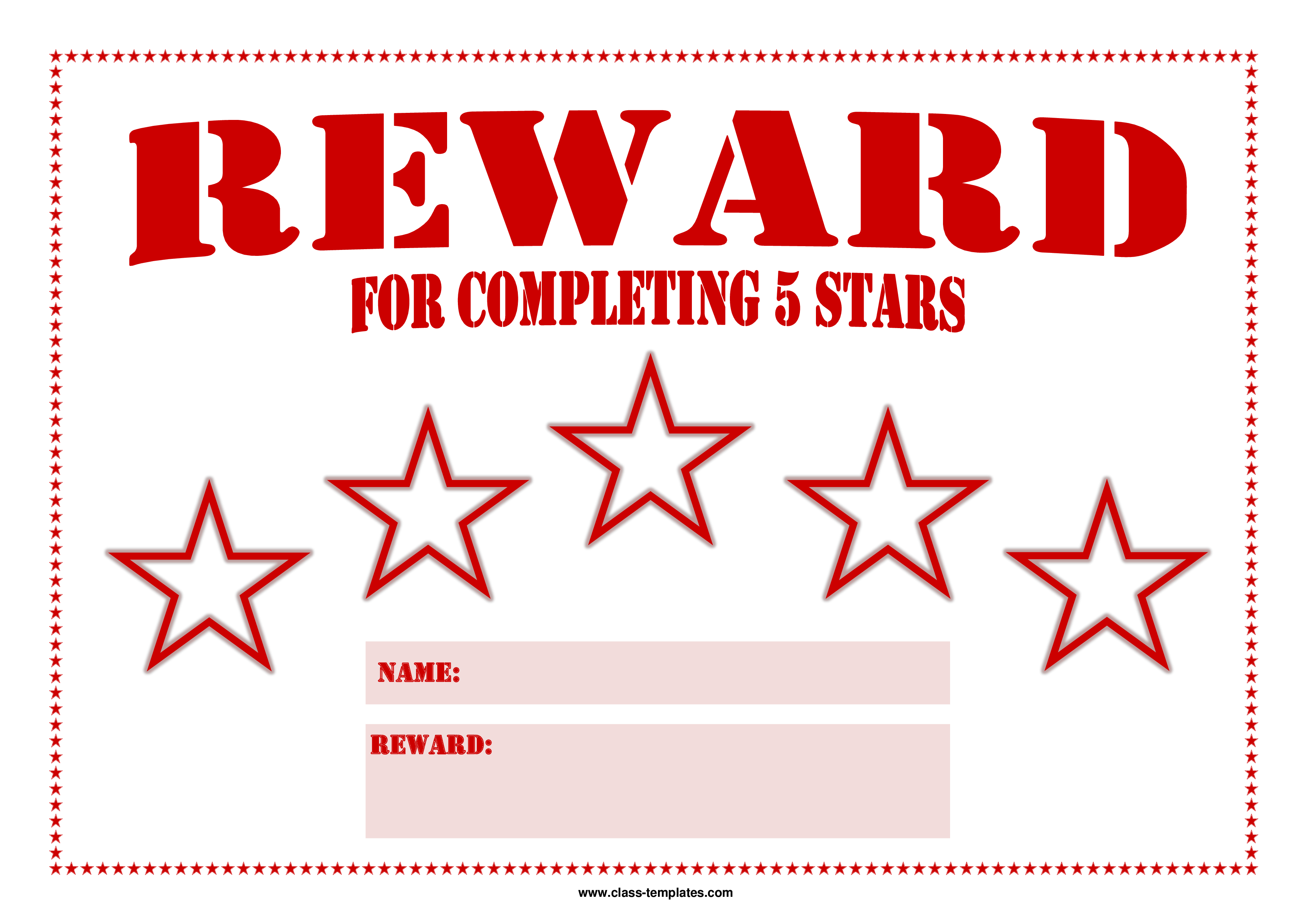5 Star Reward Chart
Sponsored Link免费模板 保存,填空,打印,三步搞定!

Download 5 Star Reward Chart
Adobe PDF (.pdf)- 本文档已通过专业认证
- 100%可定制
- 这是一个数字下载 (144.56 kB)
- 语: English
Sponsored Link
How do star reward charts work? What is the process for making a star reward chart? Download our 5 Star Reward Chart which is perfect for encouraging positive behavior in children. It includes space for up to 50 stars and can be easily personalized with your child's name or message. Get one now!
A 5-star reward chart is a visual tool often used for children as a positive reinforcement and motivation system. It is designed to encourage and track desirable behaviors or accomplishments by awarding stars or stickers as rewards. The chart typically consists of a grid or table with five columns, each representing a specific level or achievement. Here's how a 5-star reward chart generally works:
- Behavior or Goal Definition: The chart starts with a clear definition of the behavior or goal that the child is expected to achieve. This could include tasks like completing homework, brushing teeth, doing chores, or exhibiting good behavior.
- Star Levels: The chart has five columns, each labeled with a star or a specific color. Each column represents a different level of achievement or effort.
- 1 Star: This is often the starting point, representing the minimum acceptable effort or behavior.
- 2 Stars: This level signifies a slightly higher level of effort or accomplishment than the first level.
- 3 Stars: This level indicates an even greater effort, often closer to the desired goal or behavior.
- 4 Stars: Achieving this level typically means excellent performance, near-perfect behavior, or significant progress toward the goal.
- 5 Stars: This is the highest level, usually reserved for outstanding behavior, exceeding expectations, or successfully reaching the goal.
- Reward System: Depending on the child's age and preferences, rewards can vary. Common rewards include stickers, small toys, extra playtime, a special treat, or additional privileges.
- Tracking Progress: The child receives stars or stickers in the corresponding column as they demonstrate the desired behavior or make progress toward the goal. Parents or caregivers mark the chart together with the child.
- Goal Achievement: The ultimate aim of the chart is to motivate the child to achieve the highest star level consistently. When they reach this level, they receive the agreed-upon reward.
- Consistency: Consistency is crucial for the effectiveness of the reward chart. Parents or caregivers need to consistently acknowledge and reward the child's positive efforts.
- Review and Reset: Once the child has achieved the highest level, the chart can be reset, and new goals or behaviors can be established. This encourages ongoing improvement and motivation.
5-star reward charts are a positive and visual way to reinforce desired behaviors, promote self-discipline, and provide a sense of accomplishment for children. They help children understand the relationship between effort and reward, which can be a valuable life skill. However, it's important to set realistic goals, tailor the chart to the child's age and abilities, and be consistent in the reward system to ensure its effectiveness.
This 5 Star Reward Chart is intuitive, ready-to-use and smart! Try it now and let this template inspire you and others with you. We certainly encourage you to use this 5-Star Reward Chart for your own good and are confident it will fit your needs.
Download this educational 5-Star Reward Chart now!
DISCLAIMER
Nothing on this site shall be considered legal advice and no attorney-client relationship is established.
发表评论。 如果您有任何问题或意见,请随时在下面发布
相关文件
Sponsored Link

